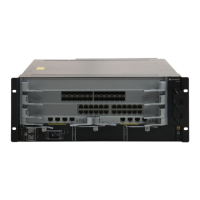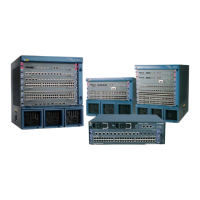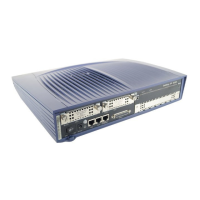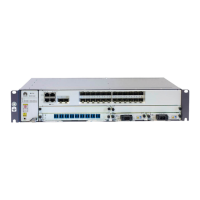1. In a ring network, divide regions and create different instances for regions.
2. Select a switching device functioning as a root bridge from switching devices for each
instance.
3. In each instance, calculate the shortest paths from the other switching devices to the root
bridge, and select a root port for each non-root switching device.
4. In each instance, select a designated port for each connection according to port IDs.
According to current networking, master ports and backup ports may be involved. For details,
see 9.1.1 MSTP Introduction.
MSTP also supports the following features to meet requirements of special applications and
extended functions:
l Supports the Proposal/Agreement mechanism to implement rapid convergence.
l Supports protection functions as listed in Table 9-5.
l Supports MSTP multi-process in the scenario where MSTP and STP/RSTP are used
together. MSTP multi-process implements independent spanning tree calculation for every
access rings.
l Supports MSTP interoperability between Huawei devices and non-Huawei devices. Proper
parameters are required on Huawei devices running MSTP to ensure nonstop
communication.
Table 9-5 MSTP protection
MSTP
Protection
Scenario Configuration Impact
BPDU
protection
An edge port changes to be a
non-edge port after
receiving a BPDU, which
triggers spanning tree
recalculation. If an attacker
keeps sending bogus BPDUs
to a switching device,
network flapping occurs.
After BPDU protection is enabled on the
switching device, the switching device shuts
down the edge port if the edge port receives
an RST BPDU, and notifies the NMS of the
shutdown event. The attributes of the edge
port are not changed.
TC protection Generally, after receiving
TC BPDUs (packets for
advertising network
topology changes), a
switching device needs to
delete MAC entries and ARP
entries. Frequent deletion
operations will exhaust CPU
resources.
TC protection is used to suppress TC-BPDUs.
The number of times that TC-BPDUs are
processed by a switching device within a
given time period is configurable. If the
number of TC-BPDUs that the switching
device receives within the given time exceeds
the specified threshold, the switching device
handles TC-BPDUs only for the specified
number of times. Excessive TC-BPDUs are
processed by the switching device as a whole
for once after the timeout period expires. This
protects the switching device from frequently
deleting MAC entries and ARP entries, thus
avoiding over-burden.
Quidway S7700 Smart Routing Switch
Configuration Guide - Ethernet 9 MSTP Configuration
Issue 01 (2011-07-15) Huawei Proprietary and Confidential
Copyright © Huawei Technologies Co., Ltd.
428

